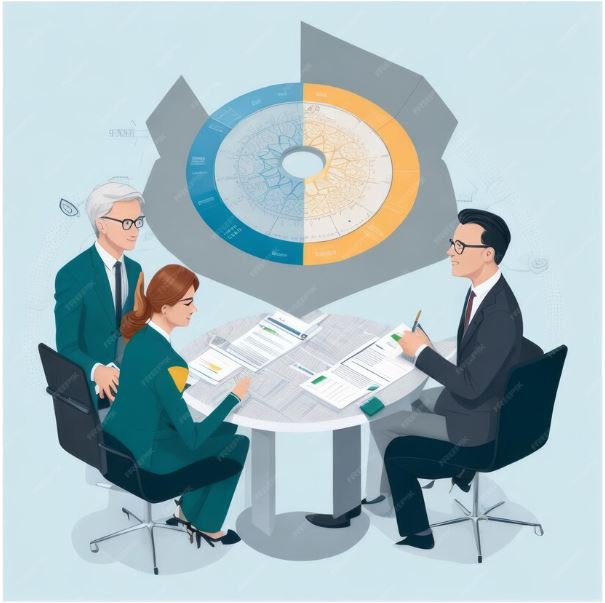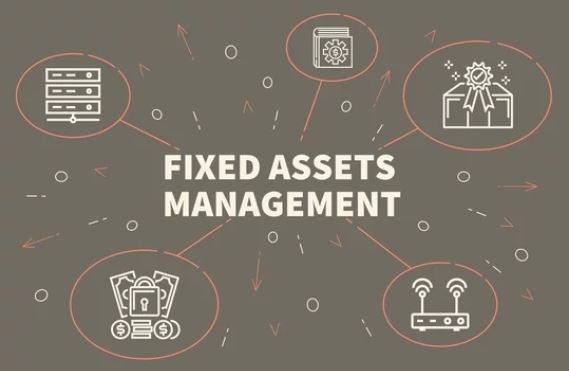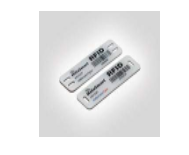Monday - Saturday
10:00 AM - 07: 00 PM

Auditing services, often referred to as audits, encompass the examination of financial statements, the assurance of other commitments, and the execution of agreed-upon procedures within the audit domain. The primary objective of auditing is to ascertain whether the financial statements and various business activities of companies accurately reflect the true state of affairs for a specific fiscal year.
The provision of auditing services is exclusively permitted for audit firms or independent auditors acting as sole proprietors, who satisfy stipulated criteria and hold a valid license for delivering auditing services. Independent auditors are restricted from conducting audits for public limited liability companies classified as large corporations, entities with shares listed on regulated markets, banks, brokerage firms, management companies, and other legal entities offering financial services. Additionally, they are barred from auditing consolidated financial statements.
Auditing services may only be rendered by individuals possessing a certified auditor's license on behalf of an auditing company.

Fixed asset management is the process of tracking and maintaining an organization's physical assets and equipment. Organizations frequently use barcodes, QR codes, or RFID to help track their assets as they are easy to scan and to use with mobile devices.
Asset management services encompass a comprehensive suite of offerings, including:
Ensuring the accuracy and existence of fixed assets through meticulous verification processes.
Conducting precise assessments of inventory holdings to maintain optimal stock levels.
Implementing rigorous examinations of warehouse facilities to enhance operational efficiency.
Evaluating dealership operations to optimize performance and compliance.
Ensuring retail stores operate efficiently and adhere to established standards.
Utilizing advanced tagging methods to streamline asset identification and tracking.
Employing efficient tagging techniques to enhance inventory management.
Leveraging geographical technology for location-based asset tracking and optimization.
Implementing Radio-Frequency Identification technology for precise asset monitoring.
Deploying sophisticated systems for automated asset verification, reconciliation, GAP reporting, and Geo Tagging, ensuring operational excellence and compliance.
Our comprehensive fixed asset management services include:
Meticulous inspection of fixed assets through both wall-to-wall and blind verifications.
The creation of a detailed asset database, encompassing descriptions, make, model, serial numbers, and unique tag numbers for precise tracking.
Associating assets with their respective custodians for efficient management.
Ensuring strict adherence to statutory compliance standards as mandated by the Companies (Auditor's Report) Order, 2016 (CARO 2016).
Offering valuable insights and recommendations regarding asset disposal and impairment strategies.
Providing 100% physical verification services across India and on a global scale.
Our accomplished team boasts a wealth of experience, having successfully managed over 100 Fixed Asset Management projects.
Delivering comprehensive GAP reporting to bridge discrepancies.
Accurate reconstruction of Fixed Asset Registers (FAR) for precise record-keeping.
Meticulous mapping of invoices for streamlined financial record management.
Fixed asset management is a meticulous process aimed at monitoring and maintaining tangible assets for various purposes, including financial accounting, valuation, preventive maintenance, and theft prevention.
Organizations encounter substantial difficulties in keeping tabs on the whereabouts, quantity, condition, maintenance schedules, depreciation status, and valuation of their tangible assets. A widely adopted method for tracking these fixed assets involves the use of serial numbered asset tags. These tags are affixed to assets and are designed for effortless and precise scanning.
The asset owner can conduct asset inventory by employing a reader or Asset Management System (AMS) application. This process facilitates the generation of a GAP report that provides the following critical information:
Precise information regarding where each asset is located within the organization.
The exact count of each type of asset to manage inventory levels effectively.
An assessment of the current condition of assets, aiding in maintenance planning.
Tracking maintenance schedules to ensure assets remain in optimal working order.
Monitoring the depreciation of assets for accurate financial reporting.
Determining the current value of assets, which is essential for financial accounting and reporting.
This comprehensive approach to fixed asset management enhances an organization's ability to safeguard its investments, streamline operations, and maintain financial accuracy.






Inventory audit is a critical auditing procedure that involves physically verifying a company's stock to ensure its alignment with the computed inventory data maintained by the company. The primary objective of this activity is to reconcile any disparities between the recorded book stock and the actual physical stock by making necessary adjustment entries.
While companies are legally obligated to conduct this audit at least once during each financial year, inventory audits, often referred to as stock audits, have gained exceptional significance, particularly for emerging businesses operating across multiple locations and engaging with vendors and dealers. In such scenarios, maintaining an accurate record of both tangible and intangible inventory becomes imperative for seamless operations.
Moreover, the purpose behind conducting an inventory audit must be carefully considered, as different approaches are employed in various audit procedures. The audit's specific objectives and the nature of the inventory being examined guide the audit process, ensuring its effectiveness and relevance to the company's operations.
Our inventory management services encompass:
Thorough physical verification of inventory using both wall-to-wall and blind methods.
Ensuring the accuracy of inventory records through meticulous reconciliation processes.
Providing comprehensive GAP reporting and in-depth analysis of inventory ageing.
Conducting audits based on detailed checklists to ensure compliance with various regulations and standards.
Offering valuable recommendations to enhance inventory and warehouse management processes.
Identifying and addressing slow-moving inventory items for improved efficiency.
Carrying out audits related to disgorgement as needed.
Precise reconciliation of records to ensure data accuracy and consistency.
Benefits of Inventory Audit Services:
Inventory audit services help uncover and prevent losses due to lack of security, such as theft, misappropriation, and wastage. They are critical for identifying issues like dead and expired stock and variations in packaging and warehouse procedures.
Professional inventory audit firms offer an unbiased evaluation of inventory and identify gaps in the current inventory management process. This is particularly valuable for companies with multiple businesses in various locations.
Inventory audit reports provide a true picture of the company's financial position. They enable efficient handling of stock that needs replacement or repair, thereby preventing financial losses
Inventory audits are essential for reducing unnecessary investments in slow-moving or stale stock. They ensure a balanced inventory and help manage material shortages and overstocking, especially when dealing with multiple vendors.
Any business or individual can opt for inventory audit and verification to make informed decisions. Stock audits may also be required under statutory requirements, such as those imposed by banks. Process Involved in Inventory Audit Services:
Detailed discussions with audit experts to understand business needs, audit frequency, objectives, locations, and man-days required to tailor the audit process accordingly.
After discussions, audit experts internally analyze the requirements and present a scope and quotation for approval, minimizing communication gaps.
Once the scope and quotation are agreed upon, necessary information is gathered, such as invoices, bank statements, software setup, and GST login credentials. The audit expert establishes a timeline for the audit.
Field staff execute the inventory audit as per the agreed plan at multiple locations.
All observations and audit results are presented to the client in the required format.

The role of internal audit functions is undergoing a significant transformation, evolving into a more robust and agile tool in the hands of CFOs. While maintaining its core functions of controls and checks, internal audit services are becoming increasingly dynamic and sophisticated.
Today, internal audit services are shifting away from traditional, labor-intensive, and routine checks. Instead, they are harnessing the power of advanced control systems, supported by a range of computing and data mining tools. CFOs and heads of internal audit are actively collaborating to build a dynamic and results-oriented audit team that plays a pivotal role in guiding key business decisions.
Our organization has been a strategic partner for numerous companies, assisting them in enhancing the effectiveness of their internal audit processes. We offer a specialized portfolio of services tailored to meet the evolving needs of modern internal audit functions.
The internal audit function is undergoing a transformation, evolving into a more robust and agile tool at the disposal of CFOs. Its primary objective remains aiding and guiding the management team while still maintaining a strong focus on fundamental control and verification processes.
Internal audit services are no longer confined to traditional, labor-intensive checks; they are transitioning into advanced control systems supported by a range of computational and data analysis tools. Today, CFOs and heads of Internal Audit actively collaborate to build a dynamic and results-oriented audit team capable of providing valuable insights for critical business decisions.
We have been instrumental in partnering with numerous companies to enhance the effectiveness of their internal audit processes. Our portfolio of services is specifically designed to address these evolving needs in the field of internal audit.
As the demands on internal audit departments continue to grow, driven by increasing risks and compliance requirements, these departments often face challenges in terms of their capacity and resources. At this juncture, internal auditors and CFOs explore the option of co-sourcing to bolster the department's capabilities and enhance productivity without expanding the internal workforce.
We specialize in co-sourcing solutions, offering a comprehensive range of services. These services range from fundamental tasks like inventory verification within your own facilities and warehouses to scrutinizing claims at the distributor level and assessing damages at the retailer level. Our goal is to provide internal audit teams with the necessary expertise and support in conducting essential checks and controls.
Another crucial area where we excel in the co-sourcing realm is transforming data collected from various audits, assessments, verifications, and transactions into valuable insights using effective data management tools. This not only boosts productivity but also enhances the visibility of the internal audit department, all while maintaining cost-efficiency.
Leveraging the extensive experience of our internal audit professionals, we go a step further by offering industry best practices and benchmarks as part of our deliverables. This holistic approach ensures that our co-sourcing services contribute to the overall effectiveness and success of your internal audit efforts.
We specialize in helping our clients transform their internal audit function from a traditional, control-focused role into a proactive and process-driven function. Our team of experts is well-equipped to meet the ever-growing demands placed on internal audit departments. We collaborate effectively with internal audit teams, guiding them through a transformation into a function that prioritizes identifying and addressing issues within processes.
Through an in-depth process that begins with scrutinizing vendor contracts, extends to invoice analysis, and culminates with reviewing vendor statements, we have successfully identified and recovered funds that were previously overlooked and considered unrecoverable. Our analytics team utilizes the latest tools and techniques, combined with extensive experience, to uncover and recapture funds during these assessments. Some common scenarios where we have identified and recovered funds include missed credits for returned materials, price variance credits, unclaimed discounts and rebates, unprocessed credit memos, and payments for canceled invoices.
Operational or process auditing is a systematic and independent examination of an organization's processes, procedures, and systems to evaluate their effectiveness, efficiency, and compliance with established standards, regulations, and best practices. The primary goal of operational or process auditing is to identify areas for improvement, assess risks, and ensure that the organization's operations are running smoothly and in accordance with its objectives.
Here are some key aspects and principles of operational/process auditing:
Auditors need to clearly define the scope of the audit, including the specific processes or areas to be examined, objectives, and the audit's timeline.
Auditors should be independent of the processes being audited to ensure objectivity and impartiality in their assessments.
Identifying and evaluating potential risks associated with the audited processes is a critical step. This includes assessing both internal and external risks.
Auditors examine relevant documentation, including policies, procedures, records, and reports, to understand how processes are supposed to work and whether they are being followed.
Auditors may use various testing methods and sampling techniques to gather evidence and assess the effectiveness of controls and compliance.
Conducting interviews with personnel involved in the audited processes can provide valuable insights into how processes are executed and whether there are any issues or deviations.
Analyzing data related to the audited processes can help identify trends, anomalies, and areas that require further investigation.
Auditors evaluate whether the processes are in compliance with relevant laws, regulations, industry standards, and internal policies.
Auditors assess the efficiency of processes in terms of resource utilization and the effectiveness in achieving the desired outcomes.
After completing the audit, auditors prepare a detailed report that includes findings, recommendations, and action plans for improvement. The report is typically shared with management and relevant stakeholders.
It's important to monitor and follow up on the implementation of recommendations and actions identified in the audit report to ensure that necessary improvements are made.
The audit process itself should be subject to continuous improvement, with lessons learned from each audit applied to enhance future auditing processes.
Operational/process auditing can be applied to various aspects of an organization, including financial processes, supply chain management, human resources, information technology, and more. It serves as a valuable tool for organizations to ensure accountability, transparency, and efficiency in their operations while mitigating risks and enhancing overall performance.